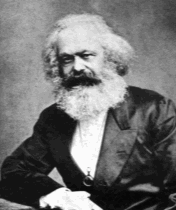A Contemporary Russian View of Dialectical Contradiction
Contemporary
Philosophical Dictionary [Sovremennyi
Filosofskii Slovar’], V. E. Kemorova, editor, London : Panprint, 1998, pp
705 – 6.
Contradiction
(Dialectical): The process of mutual
influence of opposites. Opposites are mutually complementary sides of a
concrete unity, having mutually excluding directions of change. These sides
(moments) of the contradiction coexist in mutual dependence, mutual
penetration, and mutual reflection. Contradictions are distinguished as inner
and outer, antagonistic and non-antagonistic, fundamental and non-fundamental,
particular and general. There can also be discerned contradictions in nature
(attraction – repulsion, assimilation – dissimulation, etc), objective –
subjective contradictions in social life (production – consumption, the
struggle of social classes, and others), and in people’s thinking (antinomies –
contradictions, aporias, dilemmas).
Hegel
defined a contradiction as essentially different phenomena within the framework
of their common identity (unity), and in [706] the reflection of opposites he
discerned the inner source of the development of the world in reflected
opposites. Marxist philosophers consider the category of contradiction central
to dialectical doctrine in so far as it expresses the existence of the law of
the unity of the struggle of opposites. According to the theory of dialectics,
there is both unity and struggle in a contradiction. Contradictions are
inevitable; without them there is neither development of the world nor
evolution of our consciousness. Opposites presuppose one another and coincide
among themselves to the extent that they have same essence and they belong to a
whole that is common to them. At definite stages of development a contradiction
establishes a harmony between its sides. The equilibrium of opposites is
short-lived, however, and is replaced by disharmony and conflict, because of
the tendency of each of the opposites to seize the upper hand. In the process
of continuous mutual replacement and reflection, the sides of the contradiction
sooner or later lose their relative independence and underlying definiteness,
and merge in a “third” (a new quality, an emergent), inside of which they take
on sublated
[1]
(virtual, conditional) being. The appearance of a new quality as the product of
coincidence of the opposites of the old quality is the culmination point of the
development of a contradiction, the contradiction is resolved dialectically,
sublated, preserved as a possibility.
The idea of a contradiction as a
unity of opposites was formulated in the 6th to 5th centuries B. C. Lao-Tse imagined a Dao
constructed from the polarity of Yin and Yang, and Heraclitus elevated the
“struggle” of opposites to the level of a universal law for everything
existing. Plato taught that universal conceptions are necessarily contradictory
and that truth is attainable by bringing together contradictory sides into a
unity and wholeness. Nicolas of Cusa and Giordano Bruno described contradiction
as a picture of the penetration of opposites by one another, as a result of
which that contradiction turns out to be the inner connection of opposites.
Fichte saw in a contradiction the beginning from which flow all attributes of a
theoretical system, which is formulated as “something equal and not equal to
itself.” Hegel added that contradiction is the foundation of every movement,
the cause of the formation and destruction of things. Karl Marx took
contradiction as the specific essence of a thing. E. M Orudzhev treated
contradiction as the internal content of a object, the opposites of which must
collide with each other not directly, but through a mediating link. A series of
Russian authors have noted as well that a contradiction usually exists in an
asymmetrical form, where one of its sides dominates, and the other sides are
subordinated to the leading one.
It is necessary to distinguish
between the idea of those things which are immanent in the object of a
contradiction and the idea of a non-contradictory reflection of this object in
people’s consciousness. Following Hegel, however, investigators believe that
the true form of the expression of an objective contradiction is the
conjunction of a thesis and an antithesis (“Something moves and does not move,
because such is then the essence of real movement”). Other philosophers,
following Kant, consider the conjunction of a thesis and an antithesis only as
a fixation of our ignorance (antinomy – problem), but not at all a
representation of a real contradiction. Another subject for discussion is the
question of whether the sides of a contradiction must collide among each other
in one and the same relation or in different ones. Antinomists / irrationalists
admit that the coincidence of opposites reveal themselves only by intuition.
“Tragic dialectics” insist on the fundamental unresolvability of perpetual
antinomies.
--
D. V. Pivovarov


